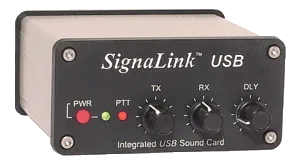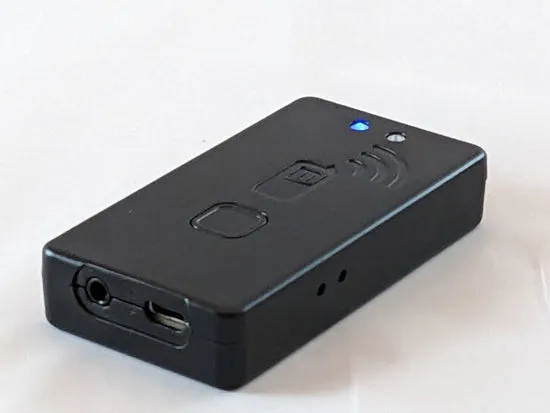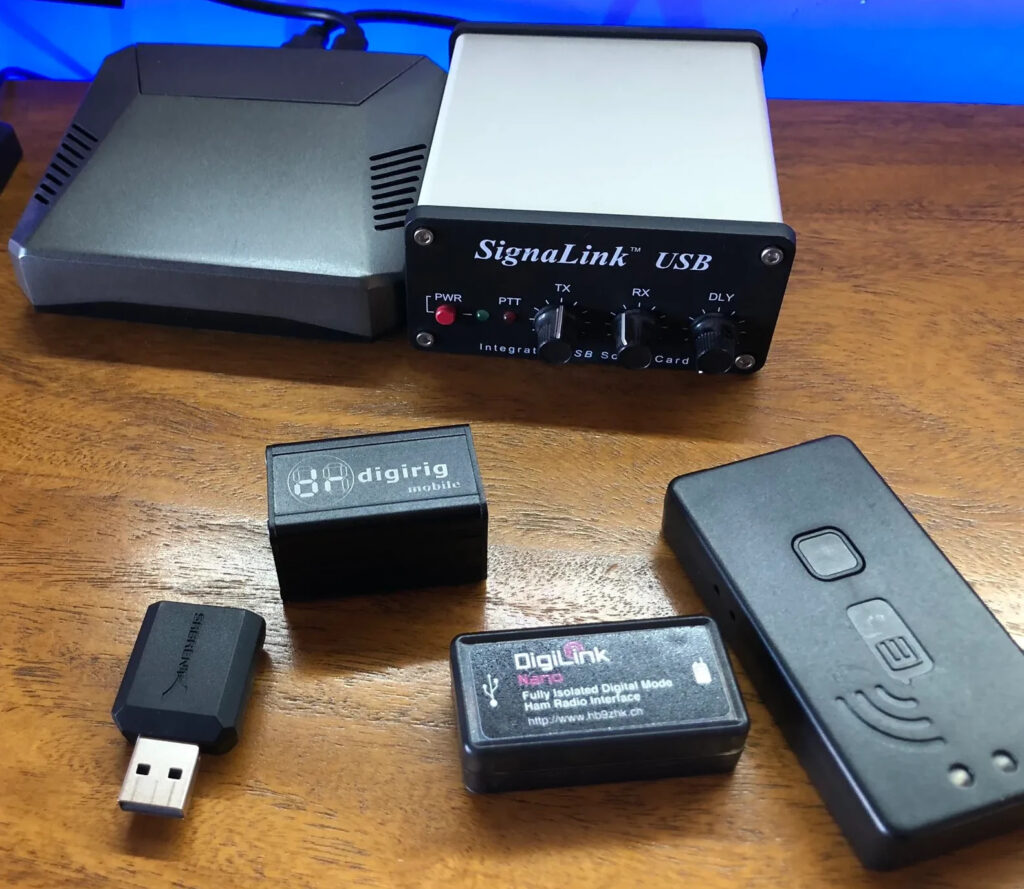Let me start out by saying I’m no expert on this topic, but as I’ve been fumbling around between different options, I felt I may as well summarise some of what I’m finding out. The devices are all different with no single one being the best at everything, so it may be very useful for anyone else starting out on this journey, to maybe just catapult forward a bit and save them the same first few weeks of confusion. I’m on the point of now buying a DigiRig device, so this page is also going to be useful to me to get my thoughts in order.
I’ll update this page as I travel further along the road, unless I get bankrupt first, and my journey ends sooner! The first iteration will be text summaries, and maybe from that I’ll be able to create a more visual summary table.
If you have a radio with a built-in soundcard, such as the ICOM 7100 or Yaesu FT-991A, then you require no hardware device at all, as a single USB cable will let the computer recognise that connection as a USB Audio Codec connection with PTT and CAT control (often sees two USB ports, one for sound, and the other for rig control).
Some radios also have a built-in TNC for use with APRS or Winlink, such as the Kenwood TM-D710GA. Such a radio just requires a connection using the programming cable to the computer. The computer sees the radio as a TNC device for Packet operations. But if you want to use other digital modes then you may want to still consider the devices below.
There are also super cheap miniature sized soundcards, but be aware they can experience RF interference, and they only provide connections to an audio in/out for the radio. There is no on-board functionality, and you will most likely still need to buy some plain audio adaptor cables (radio to 3.5mm plugs).
SignaLink USB

Often considered to be the benchmark against which all other hardware devices are compared for digital modes, the SignaLink by Tigertronics has been around for a number of years, and has an extensive collection of cables available to connect to almost every radio there is. The SignaLink USB will work with virtually any Ham or commercial transceiver that has a Data Port, Accessory Port, or Mic jack.
The SignaLink USB supports virtually ALL digital modes that are available for sound card interfaces including but not limited to, PSK31, MT-63, WSJT/WSJT-X modes (FT8, JT4, JT9, JT65, QRA64, ISCAT, MSK144, WSPR, JTMS, FSK441, FSK315, ISCAT, and JT6M.), SSTV, APRS®, Packet (300 and 1200 baud), VARA HF, VARA Narrow, and VARA Wide. The SignaLink USB also supports virtually ALL Voice modes (VOIP, RoIP, etc.), such as EchoLink®, and Zello. About the only modes that you can’t operate with the SignaLink USB, or any other sound card interface, are FSK, Pactor, G-TOR and Clover.
What it Is:
It is a sound card interface that provides the necessary hardware to operate virtually all sound card digital and voice modes, and you can quickly adjust Tx, Rx sound levels, and delay on the knobs. It is usually able to trigger the PTT as well, even if the cables have to connect through the Mic port. No special operating system USB drivers are required to use it on Windows, macOS or Linux. The computer sees it as a USB Audio Codec sound device. It means also there is sometimes additional computer modem software application to drive the sound required for modulation for some modes e.g UZ7HO Soundmodem for Packet, VARA HF or VARA FM for VARA mode, etc.
What it does NOT do:
It does NOT provide the “CAT” (Computer Assisted Tuning) hardware needed to control the radio. So, it will not switch frequencies for VarAC automatically. It will be better suited to modes that stay on a fixed frequency such as Packet, JS8Call, etc.
But a separate CAT control app can be used such as FLRIG or the transceiver’s own control software. Most software chat apps make allowance for specifying the soundcard, PTT and even CAT control interfaces separately.
Notes:
- It is powered via the computer’s USB cable so to avoid any problems, it is suggested that you plug the SignaLink into a powered, “high power” USB hub, or (preferably) directly into the computer’s rear panel USB jack. This also means it is not ideal for use with a mobile phone as it will draw too much power.
- It provides full isolation between the radio and the computer, so this helps prevent any hum coming from ground loops.
- Cables are often also supplemented with jumper modules that are inserted onto the device’s circuit board to change the pin configurations for some radios, so you need to check carefully which radios require which cable, as well as possibly a jumper module.
- This device is the least portable of all the devices, so is probably more suited to being in the shack. It is popular for digital modes on HF, Echolink, etc.
- Cost is around $150 with one cable included (about $26 value) and jumper modules being extra.
Mobilinkd TNC

The Mobilinkd TNC is a TNC-only device that is battery powered and connects to an Android or iOS device (latter is only TNC3 and higher models). It is very compact, will run on its battery for 40+ hours, and requires only a single cable to connect to the radio. Many users actually strap the device onto the back of a handy.
What it Is:
It does TNC (Packet mode audio) for APRS or Winlink Packet. It is highly portable so suited for mobile and field use. The computer or phone will connect via Bluetooth to the device and sees it as a TNC device in Bluetooth. The software for Winlink or APRS is configured to talk to the TNC device directly (no modem app required – in fact it connects using plain text, so you could in theory work from a terminal screen). A mobile phone app, for the Mobilinkd device, is provided which helps adjust audio levels, delays, etc. This device is often paired with handies such as the Baofeng for APRS and Winlink use in the field. The availability of a cable will indicate what radios it can connect to.
What it does NOT do:
It does NOT do digital modes such JS8Call, VarAC, etc. There is no CAT control either, so you should pre-program channels for APRS, Winlink, etc so that you can switch to them manually on the radio.
Notes:
- Various models have a problem with the device turning on when very light pressure is applied to the top cover where the on/off switch is. It is recommended you carry this device inside a small lunch box to prevent this problem.
- It does not have the extensive cable collection that the SignaLink USB or DigiRig have, but there is a workaround in this video, showing how to convert a DigiRig cable for use with the Mobilinkd TNC.
- Apps such as APRSDroid and WoAD for Winlink do work very well with this device for Packet mode use in the field. Just a phone with a Mobilnkd TNC will turn any cheap handy into a fully enabled APRS device, or provide Winlink capability.
- There is a Windows app for the TNC 2 to adjust volume levels, but for TNC 3 and above just use the Android or iOS app.
- With a laptop you can also connect to it via a USB cable – just make sure it is a data cable, and not a charging-only cable.
- It’s an open source device and they encourage you to experiment with it.
- It costs about $150 and cables are extra.
DigiRig

The Digirig is an open-source integrated digital modes interface for amateur radio. The internals include a USB hub, audio codec, a fully featured serial CAT (Computer Aided Transceiver) interface, PTT (not just VOX based PTT), and potentially other modules such as GPS receiver for time synchronization (no GPS module included). It is about the size of a 9V battery, so is the smallest and most feature-rich of all the devices discussed so far. It connects with a USB-C cable to a computer (or phone) and has many available cables to connect to most radios (even if that means using the Mic port). The computer should recognise it as both a USB PnP Sound Device, and also a Serial USB to UART Bridge (with an associated COM port). It may require an OS driver for recognition of the serial port device.
Apart from the computer USB connection port, the other side of the device has ports marked Audio (for ground, audio in/out, hardware PTT) and Serial (CAT control IF your rig supports it). My TYT TH-7800 for example has no CAT control at all, so the audio cable will connect to the speaker out socket and the microphone jack on that radio (you need to select the correct cable for your radio). Other radios may have Data or PC ports that support CAT control.
What it Is:
It is a USB-powered device providing soundcard, PTT and CAT functionality. Sound levels are adjusted in the computer’s audio settings. There is no mobile app that manages this device. Digirig has a very wide selection of cables available for most radios – see https://digirig.net/digirig-transceiver-compatibility/. It should support the same modes as the SignaLink USB (and again some like Packet will need the Soundmodem software, or for VARA it will need the VARA HF or VARA FM software).
If your radio supports CAT control, then DigiRig be an excellent option for VarAC because VarAC does a lot of auto-QSY between slots and bands.
What it does NOT do:
It does not have built-in isolation between the radio and the computer (although they say this is mostly not required) but isolation can be easily added using a $20 USB isolator dongle. Any limitations with DigiRig are more likely to be limitations with your radio.
Notes:
- It is open source.
- Works with Windows, macOS and Linux.
- It costs around $50 and cables are extra. So, it is much cheaper than the SignaLink option.
Additional Comments
Steve K3FZT also suggests looking at https://hammadeparts.com/ for any custom cables (or you may also find someone nearer you doing the same thing. He also recommends the DRA devices at https://masterscommunications.com/products/radio-adapter/dra/dra-index.html, where he is using DRA-50’s on his WinLink Gateway, another one with his Packet Node and BBS.

